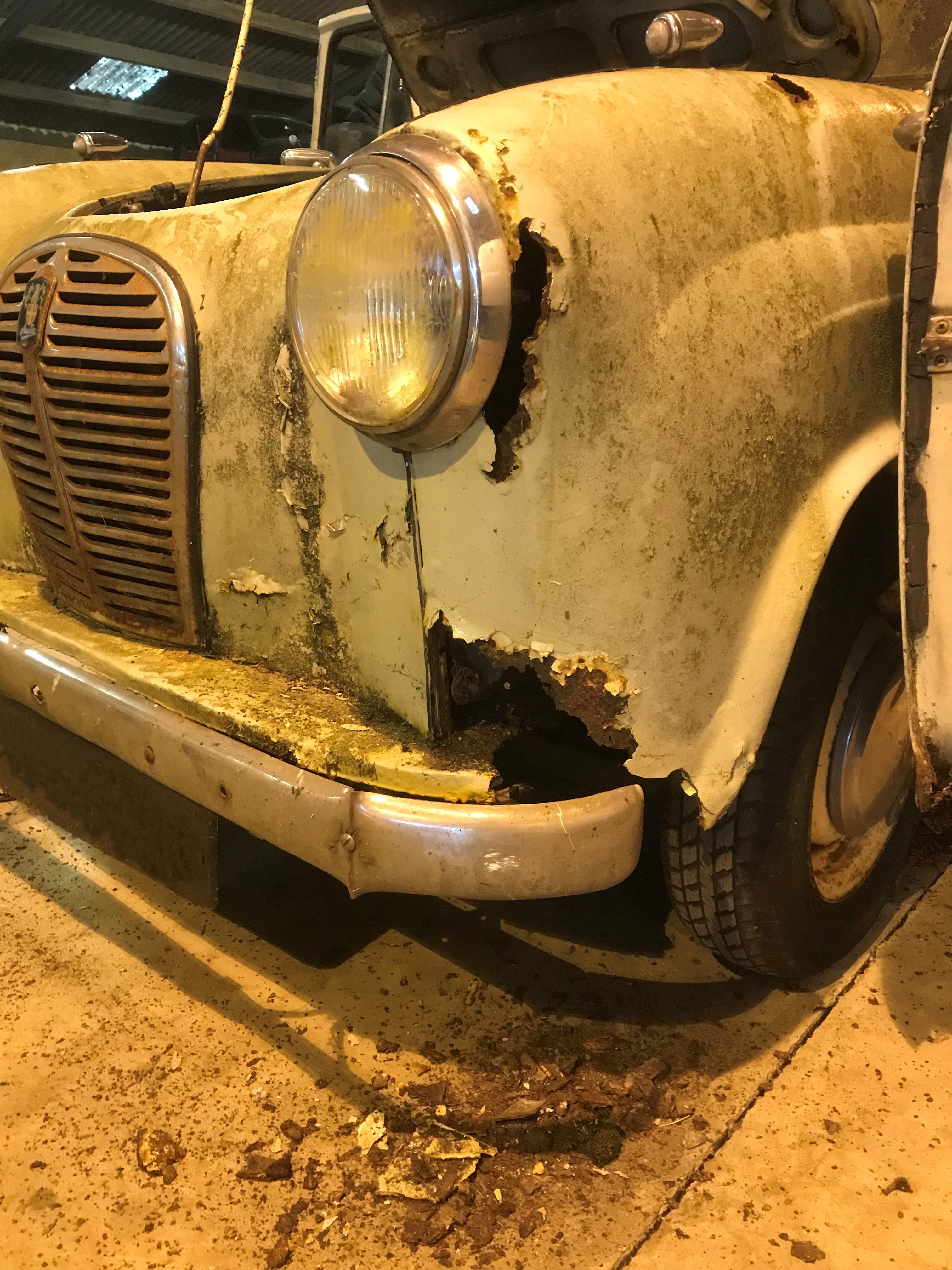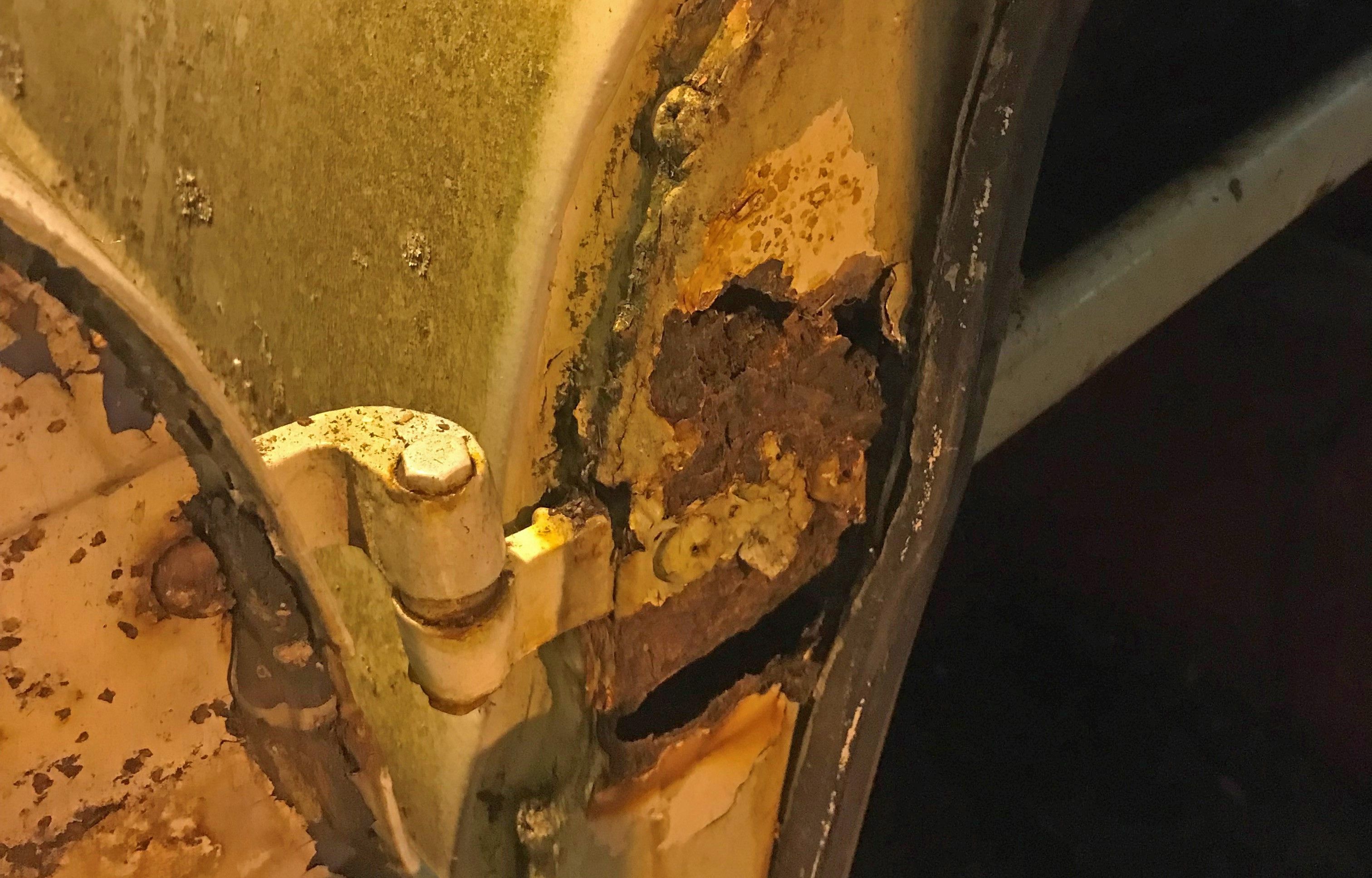Ben Coleman, contributor to Practical Classics magazine and friend of Vintage Tyres takes a closer look at the A30 he's bought.
My 1955 Austin A30 four-door has had quite a life. Originally black (as many Austin A30s seemed to have been), it had come into the previous owner’s possession in 1989 as an unwanted spares car. By then, it was maroon, very rusty and sporting a horrifically smoky 803cc engine. A full restoration, involving a colour change to Court Grey (which, let’s be honest, is white) and the fitting of a healthier 948cc engine from an A35, put it back on the road and into regular use. For more than 100,000 miles, the A30 provided tireless, reliable service, often towing a small box trailer. But eventually, somewhat worse for wear, it came off the road again.
Parked up on a driveway for several years, it’s no surprise that the A30’s bodywork has suffered. The moss and slime doesn’t help matters, but beneath the gunge and greenery are plenty of crusty holes and flaking metal. After a good poke around with a screwdriver, it appears that almost everything lower than the windows (primarily the sills, floorpans, wings, wheelarches, boot floor, rear spring mounts and scuttle) will need reconstructive surgery. It’s lucky I enjoy welding!
However, there are a number of good points. The previous owner has donated an excellent replacement bonnet, boot lid and pair of front doors, as well as a repairable set of rear doors – all better than the rotten panels on the car. And speaking of doors, the four-door version of the A30 has the narrowest doors I’ve ever seen! Yet, although you’d have thought that only contortionists would be able to gain access to the interior, the tight apertures don’t seem any worse to clamber through than those on a four-door Morris Minor.
A glance at the extra gauges on the dashboard is a clue to the larger, 48bhp 1098cc engine under the bonnet (as fitted to post-1962 Austin A40 Farinas and Morris Minors), which was rebuilt just 5,000 miles ago, and is fed by a 1.25” SU carburettor. The A30 transmission tunnel has been replaced with a differently shaped one from an A35, which has allowed a stronger ‘rib-case’ remote-change gearbox to be been fitted. A higher 4.22 differential and strengthened MG Midget half-shafts make the most of the larger engine’s power. Up front, highly prized MG Midget front disc brakes are fitted, while a pair of static seatbelts has also been bolted in for front seat occupants. This Austin should be quite a lively, usable car when it’s back in action.










